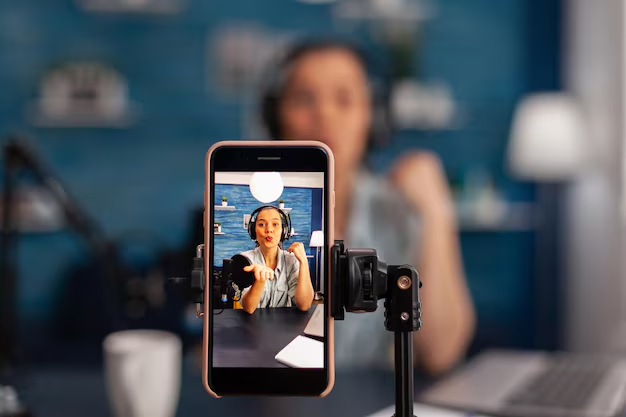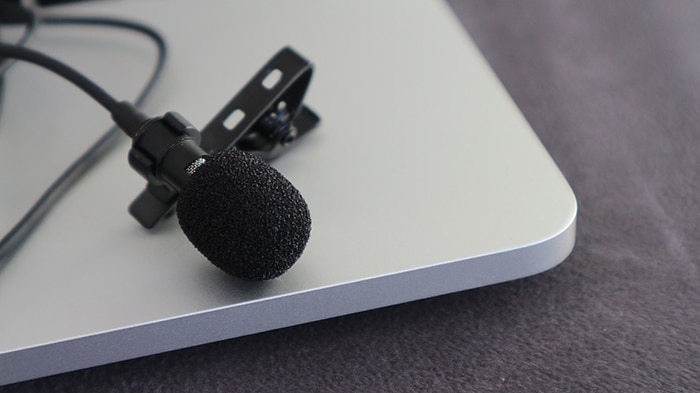You wonder how to make a quality video with a smartphone ? Today, even mid-range models can create quality video content. But this is not enough to create content worthy of the greatest video professionals.
Discover our 10 best tips (equipment, settings, organization) to follow for successful videos, whether for TikTok or YouTube.
1. Choose a smartphone with good video quality
To obtain sharp and smooth images, choose a smartphone equipped with a high-performance video sensor, capable of filming in 4K between 30 and 60 fps if possible. Models with OIS optical stabilization, good color rendering and a wide aperture (f/1.8 or more) improve brightness and depth of field. Some recent mid-range smartphones already offer very satisfactory results for YouTube, Instagram or TikTok.
To film quality videos with a smartphone, here are some recommended models:
- iPhone 15 Pro Max: ProRes recording and ultra-smooth stabilization for advanced editing.
- Samsung Galaxy S25 Ultra: 200 MP sensor and 10x optical zoom to capture precise details.
- Google Pixel 8 Pro: AI-assisted stabilization and automatic retouching for sharp images.
- Xiaomi 15T Pro: excellent value for money, ideal for beginner videographers.
- Honor Magic7 Pro: long battery life and x3 periscopic telephoto lens for extended filming.
2. Stabilize your smartphone
To answer the question “How to make a video with a smartphone?”, you must first focus on the stabilization of your device. It is essential to avoid filming handheld at all costs. Even when remaining still, small tremors degrade the perceived quality.
So use a tripod, a stabilizing gimbal or improvise with fixed supports to obtain stable shots.


So let's take the most classic case: a type video VLOG where you film yourself in front of the camera. Here, the focus should be on you, which means you should take up a good portion of the frame (and the focus should be on you).
Also read : 6 tips for a successful product demo video
3. Optimize light in multiple ways
Light is a determining factor in obtaining sharp, professional videos. Rather than relying on natural light, which can vary and create unwanted shadows, particularly if you're shooting for a certain length of time, block it out with opaque curtains or panels.
Next, use video spotlights equipped with diffusers for even, soft lighting on your subject. This technique allows you to precisely control the intensity and direction of the light, avoiding backlighting and overexposed areas, while giving a homogeneous and pleasant rendering to the image.
4. Smartphone video: Take care of the sound
Keep in mind that the sound is as important as the image. Clear audio enhances the perceived quality of your video and retains the attention of your viewers. Conversely, if the audio in a video is unpleasant, even the most incredible effects won't stop people from stopping watching your video if it's inaudible.
When recording a video with a smartphone, the sound is captured by the device's built-in microphone. These microphones are now of rather good quality: you generally obtain a clean sound, free of crackling and quite audible, if not perfect.


For professional sound at a lower cost, opt for a lavalier microphone. Easy to transport and discreet, it will become your greatest ally for sound without crackling.
Remember to adjust the decibel volume (dB) carefully so as not to oversaturate it. We come back to this later in this article, but optimizing sound quality is also done when editing your video.
5. Choose the right format and frame your video
Format and framing determine the visual impact of your video. For social networks, adapt the format: 9/16 (portrait) for TikTok and Instagram, 16/9 (landscape) for YouTube or panoramas.
If you want to create vertical capsules from a video filmed in 16:9, remember to center your subject and leave space at the top and bottom of the frame so as not to cut off important elements during cropping. This anticipation will allow you to recycle your videos more easily on different formats without losing visual quality or impact.
6. Check Battery and Storage Before Filming
Before you start filming, make sure your smartphone is fully charged and you have enough space to record all your footage. To avoid losing important footage, consider using an SD card, external hard drive or cloud storage. This preparation will allow you to film without interruption and secure your content.
7. Prepare the filming and its progress in advance
Preparation is essential to ensure efficient and quality filming. Before filming, turn your smartphone on mute to avoid any interruptions or unwanted notifications. Locate filming locations, plan your shots and sequences, and anticipate the camera movements or transitions you want to achieve.
If your video has multiple scenes, try recording them on the same day to maintain consistency in light, tone, and color. Good preparation reduces stress, saves time on editing and ensures a harmonious and professional final result, even with a smartphone.
8. Test and save your videos
Before moving on to editing, take the time to watch all your sequences to identify shots that need to be corrected or improved. Check the sharpness, framing and sound quality to make sure every shot is usable.
Once this step is completed, immediately back up your files to an external hard drive or the cloud to avoid accidental loss. This double precaution secures your rushes and guarantees that you can edit your video with complete peace of mind.
9. Use suitable editing software
Editing is an essential step to transform your rushes into professional and attractive videos. It allows you to cut unnecessary or failed sequences, add transitions, interstices and adjust the pace to energize your content. You can also work on color correction, post-shoot stabilization and adding royalty-free music to improve the final result.
Software like Premiere Pro, Wondershare Filmora, CapCut, InShot or LumaFusion offer all these features directly on your smartphone, allowing you to produce professional editing without using a computer. Well-executed editing makes the difference between a simple video and content that is captivating and engaging for your audience.
10. Focus on double backup
Before publishing or editing your videos, take the time to view all your footage to check the quality and identify shots that need correction. Once this step is completed, back up your files on at least two different media, such as an external hard drive, a NAS or the cloud.
This double backup secures your content, protects your rushes against any accidental loss and guarantees you can rework your videos with complete peace of mind.
Summary of our 10 tips to follow for making a video with a smartphone
Here's a quick recap of our 10 key tips for shooting quality video with a smartphone:
- Take care of the light : Prefer stable artificial lighting with diffusers rather than changing natural light.
- Optimize the sound : Plug in an external mic and monitor the decibels for clear, saturation-free audio.
- Adapt the format : 9/16 for networks, 16/9 for YouTube; Center the subject for easy cropping.
- Check battery and storage : Charge to 100% and allow enough space or external storage.
- Prepare for the shoot : Locate locations, plan your scenes and mute notifications.
- Test before mounting : Review your footage to correct framing, sharpness and sound.
- Take care of the assembly : Cut, stabilize, adjust colors and add transitions and free music to add a finishing touch to your video.
- Save twice : Keep your files on two media (hard drive + cloud) to avoid any loss.
If you want to achieve an impeccable professional level of quality, know that you can find a freelance video editor on Codeur.com.
